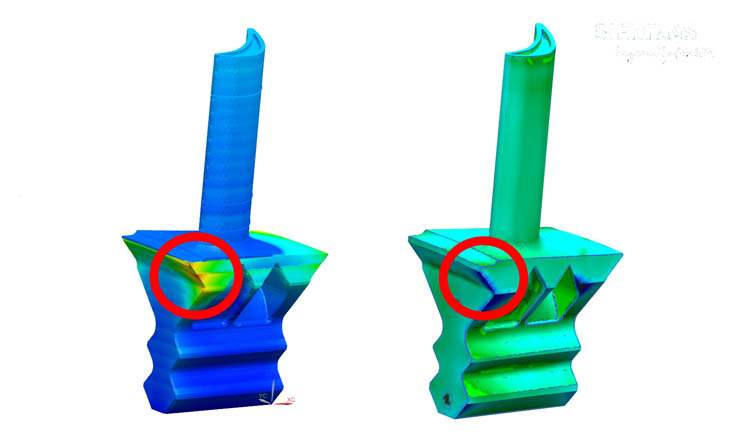
“Using the Simcenter 3D AM Process Simulation solution at toolcraft will allow us to complete our additive manufacturing workflow,” said Christoph Hauck, managing director, MBFZ toolcraft GmbH. “Through real-world testing, we have gained confidence that the Siemens AM Process Simulation solution will assist us in ensuring quality output from our print process.”
The new product allows manufacturers to iterate on a solution between the design and build tray setup steps and the simulation step. According to Siemens, this closed feedback loop is possible thanks to the tightly integrated nature of the company’s digital innovation platform. The simulation data feeds into the digital thread of information, which informs each step of the 3D printing process.
What Siemens calls a “digital backbone” allows the system to develop pre-compensated models and to feed them seamlessly back into the model design and manufacturing processes without additional data translation.
“This solution is the latest addition to our integrated additive manufacturing platform, which is helping customers industrialise additive manufacturing by designing and printing useful parts at scale,” said Jan Leuridan, senior vice-president for Simulation and Test Solutions at Siemens PLM Software. “By using a combination of empirical and computational methods we can increase the accuracy of the simulation process, feeding the digital twin and helping customers better predict their real-world print results. We have proven this over months of real-world testing with some selected first adopter companies. Providing corrected geometry and closed loop feedback can ultimately allow our customers to get better results from their additive manufacturing processes, helping to achieve that first-time-right print and realize innovation with this technology.”
The AM Process Simulation solution is expected to be available in January 2019, as part of the latest NX software and Simcenter 3D software.
Discuss this and other 3D printing topics at 3DPrintBoard.com or share your thoughts below.